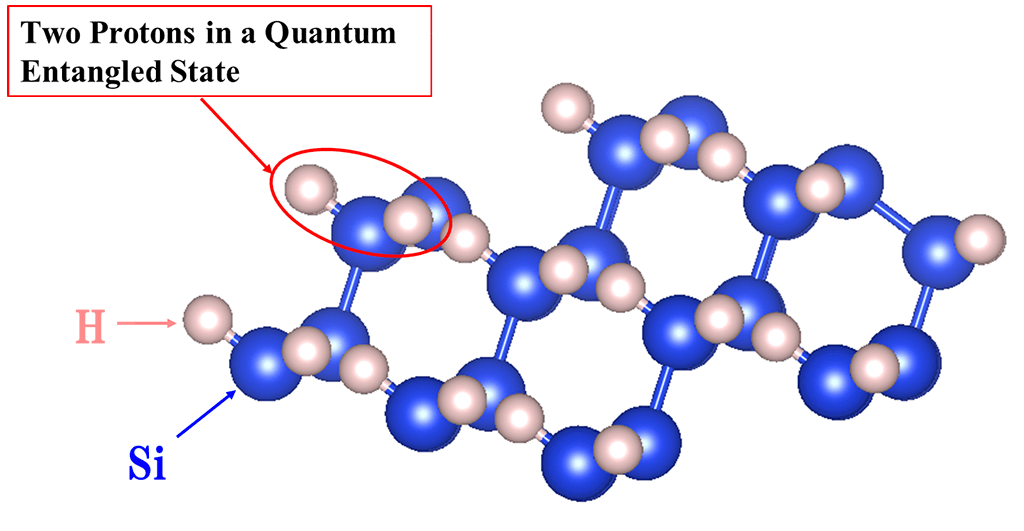A collaborative research group comprising Professor Takahiro Matsumoto of the Nagoya City University Graduate School of Design and Architecture Program in Design and Architecture in Industrial Innovation Design, Emeritus Professor Hidehiko Sugimoto of Chuo University, Senior Researcher Takashi Ohhara of the Japan Atomic Energy Agency, and Emeritus Professor Susumu Ikeda of the High Energy Accelerator Research Organization, discovered for the first time the quantum entangled state of protons terminating on a silicon surface.
This group has been conducting research for many years, focusing on the vibrational states of protons terminating on the surface of nanocrystalline silicon. As a result of this, using inelastic neutron scattering spectroscopy, this research group observed the vibrational states of protons bonded to the silicon surface and clarified the fact that two protons are in an entangled quantum state. The feature of this entangled quantum state is that it has a vibrational energy that is more than 10 times larger than that of the conventional entangled quantum state of hydrogen molecules (hydrogen molecule: 10 meV, silicon surface proton: 100 meV). A stable entangled quantum state can be formed even at room temperature. In addition, by using silicon semiconductor surface treatment technology, it is possible to form a 106-bit qubit which is considerably larger than before (102 bits). The results of this study are expected to lead to the realization of an ultra-high-speed quantum computer that can solve problems such as the "factorization of large digits" and the "traveling salesman problem" in an instant, which current supercomputers cannot solve.

Credit: T. Matsumoto et al., Phys. Rev. B 103, 245401 (2021).
According to Professor Matsumoto, "By using this discovered entangled quantum state of protons, a large number of qubits can be formed on the surface of nanocrystalline silicon. Therefore, this is expected to result in a computing speed that far exceeds the speed of any quantum computing technology that has been devised in the past. In addition, the ability to form qubits on silicon semiconductors will lead to the development of new quantum computing technologies based on modern supercomputing technologies. By using the entangled quantum states of fermions (proton), we believe that the teleportation of matter (protons) (i.e., quantum teleportation), which has so far remained in the world of science fiction, can someday be realized."
■ Entangled quantum state: Even if two particles (particle A and particle B) are closely connected but separated on a cosmic scale, a measurement on particle A instantly affects the measurement on particle B. This entangled quantum state is also the basis for building a quantum computer. In recent years, physicists have sought techniques for generating and controlling this entanglement.
■ Traveling salesman problem: This is a combination optimization problem that seeks the smallest total travel distance for visits to all cities in a given list exactly once and then return to the starting point (i.e., find the shortest route for when the salesman makes a one-time visit to a given number of cities). If there are many cities, a very long computational time is required. It is impossible to complete the calculation within a finite time even with a modern supercomputer.
This article has been translated by JST with permission from The Science News Ltd.(https://sci-news.co.jp/). Unauthorized reproduction of the article and photographs is prohibited.




